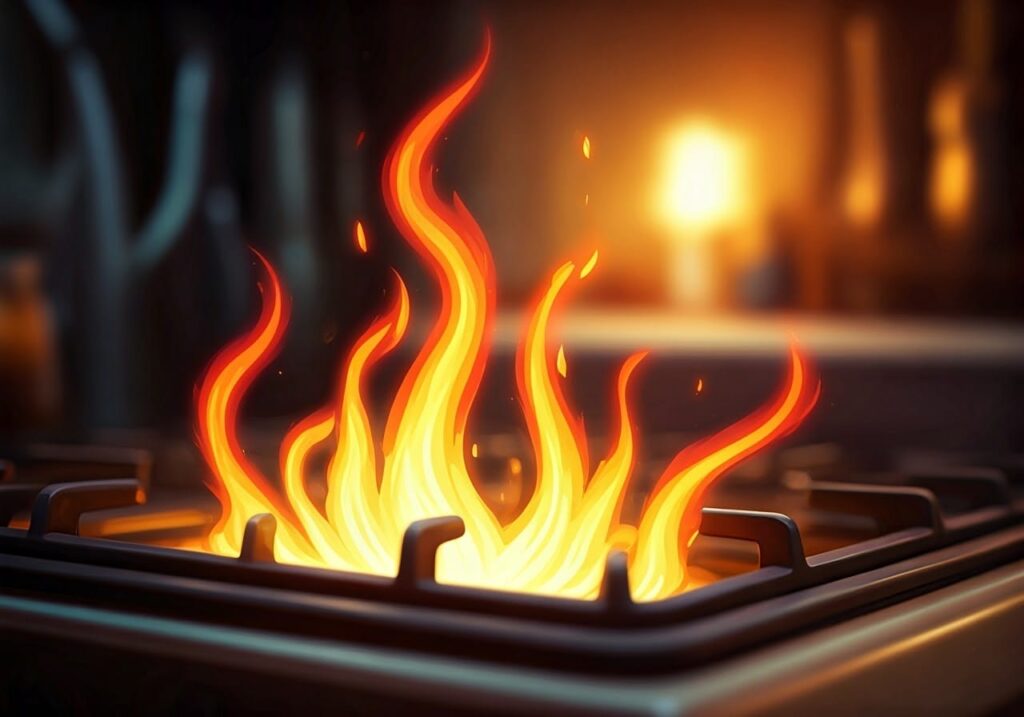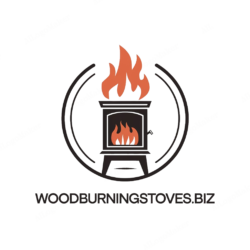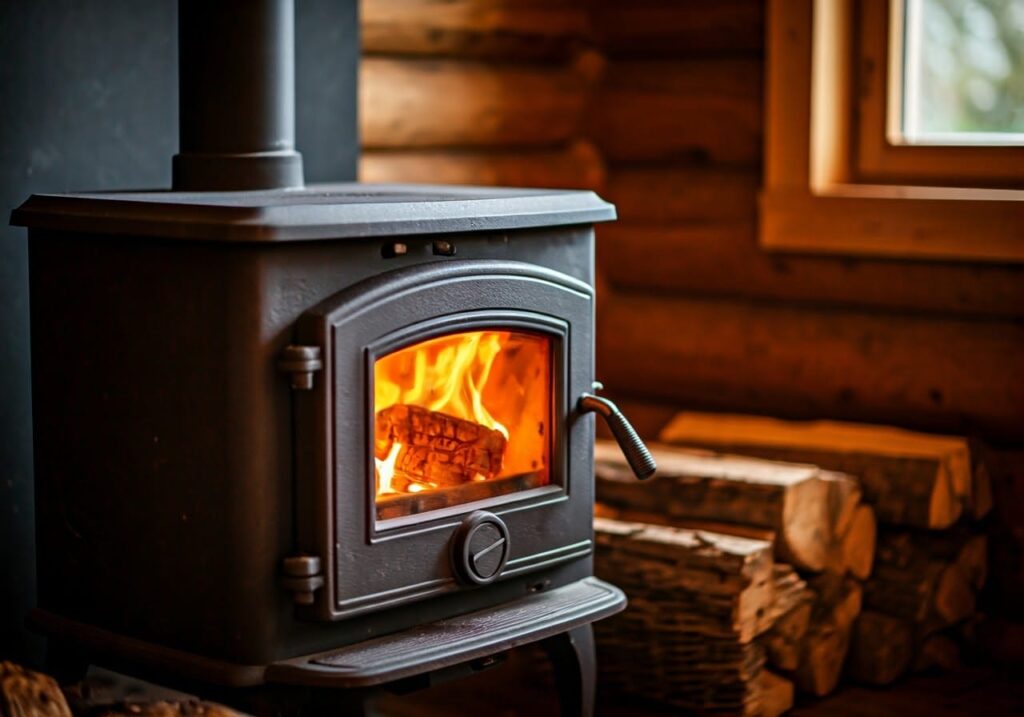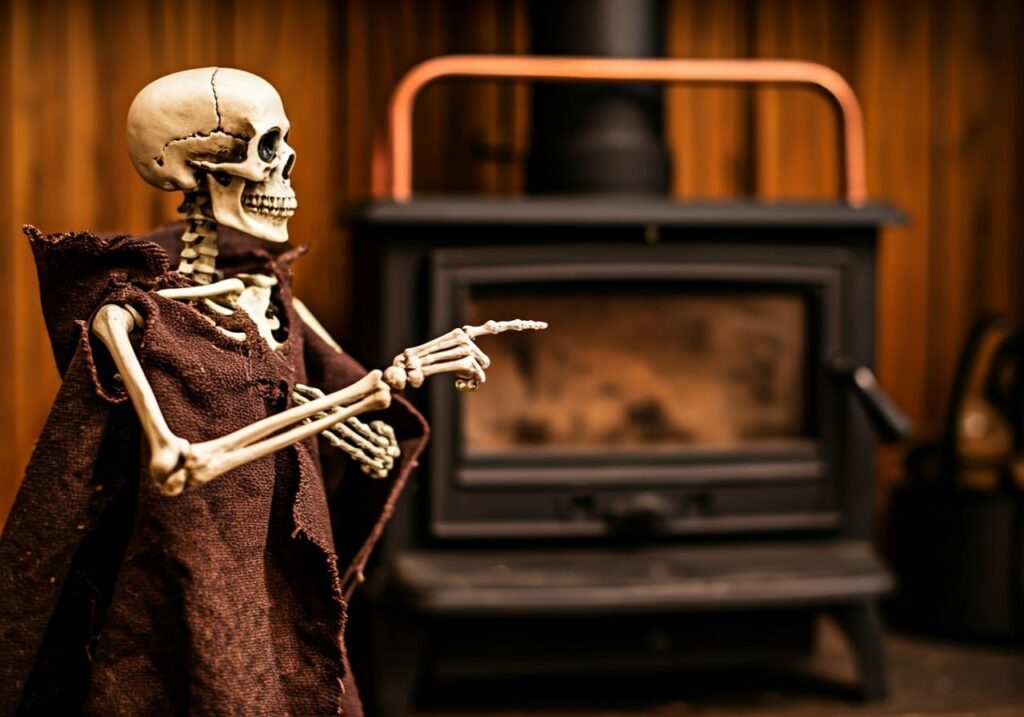Understanding how a wood-burning stove heats your home is crucial for maximizing its effectiveness. While the basic concept might seem straightforward, there’s actually a sophisticated process at work. For a comprehensive overview of wood-burning stoves, check out our complete guide on how wood-burning stoves work.

The Three Main Heat Transfer Methods
1. Radiant Heat
Radiant heat is the primary way wood stoves warm your space. This direct form of heating works by:
- Emitting infrared radiation that travels in straight lines
- Warming objects and people directly in its path
- Providing immediate warmth to the surrounding area
- Creating a cozy, sun-like warmth
Unlike forced-air systems, radiant heat from wood stoves creates a more comfortable and natural feeling of warmth. As explained in our main guide on wood-burning stoves, this type of heat is particularly effective in smaller, enclosed spaces.
2. Convection Heat
Convection is the second major way wood stoves heat your home:
- Hot air rises from the stove
- Cooler air is drawn in from below
- This creates a natural circulation pattern
- Heat gradually spreads throughout the room
Many modern stoves, as detailed in our comprehensive guide, include features that enhance convection heating through specialized chambers and designs.
3. Conduction Heat
While less significant than radiation and convection, conduction still plays a role:
- Heat transfers through the stove’s metal body
- Nearby materials absorb and store heat
- Stored heat continues warming the space even after the fire dies down
- Creates a more stable temperature over time
Heat Distribution Patterns
Near-Zone Heating
The area closest to the stove experiences the most intense heating:
- Direct radiant heat provides immediate warmth
- Temperature can be significantly higher than rest of room
- Ideal for creating a cozy gathering space
- Perfect for drying clothes or warming up quickly
Far-Zone Heating
Areas further from the stove receive heat differently:
- Mainly heated through convection
- More gradual temperature increase
- More even heat distribution
- Less intense but more consistent warming
Factors Affecting Heat Distribution
Room Layout
Your room’s configuration greatly impacts heating efficiency:
- Open floor plans allow better heat circulation
- Doorways and hallways affect air movement
- Ceiling height influences heat stratification
- Furniture placement can block or enhance heat flow
Insulation Quality
The effectiveness of your wood stove heating depends heavily on insulation:
- Well-insulated rooms retain heat longer
- Poor insulation leads to heat loss
- Windows can be significant heat loss points
- Weather stripping and curtains help retain heat
Air Circulation
Proper air movement is crucial for effective heating:
- Natural convection currents
- Strategic fan placement
- Open interior doors
- Return air pathways
Maximizing Heating Efficiency
Optimal Stove Placement
Where you place your stove matters significantly:
- Central locations work best
- Consider natural air flow patterns
- Account for chimney requirements
- Maintain safe clearances
Using Fans and Blowers
Mechanical assistance can enhance heat distribution:
- Ceiling fans on low speed push warm air down
- Stove blowers increase convection
- Room fans help move warm air
- Door fans assist heat transfer between rooms
Temperature Management
Maintaining optimal temperatures requires attention to:
- Proper wood loading intervals
- Air control adjustment
- Room temperature monitoring
- Draft management
Common Heating Challenges
Cold Spots
Addressing uneven heating:
- Identify causes of cold areas
- Adjust air circulation patterns
- Consider supplemental fans
- Optimize furniture placement
Heat Loss Prevention
Minimizing heat waste:
- Seal air leaks
- Improve insulation
- Use window treatments
- Close off unused rooms
Safety Considerations
Temperature Monitoring
Keep track of heat levels:
- Use stove thermometers
- Monitor room temperatures
- Watch for overheating signs
- Maintain safe operating temperatures
Fire Safety
Essential safety practices:
- Maintain proper clearances
- Use appropriate floor protection
- Install smoke and CO detectors
- Keep combustibles away
Conclusion
Understanding how your wood-burning stove heats your home allows you to maximize its efficiency and comfort. By considering all heating methods and implementing proper management strategies, you can create a comfortable, evenly heated living space. For more detailed information about wood stove operation and maintenance, visit our comprehensive guide on wood-burning stoves.


